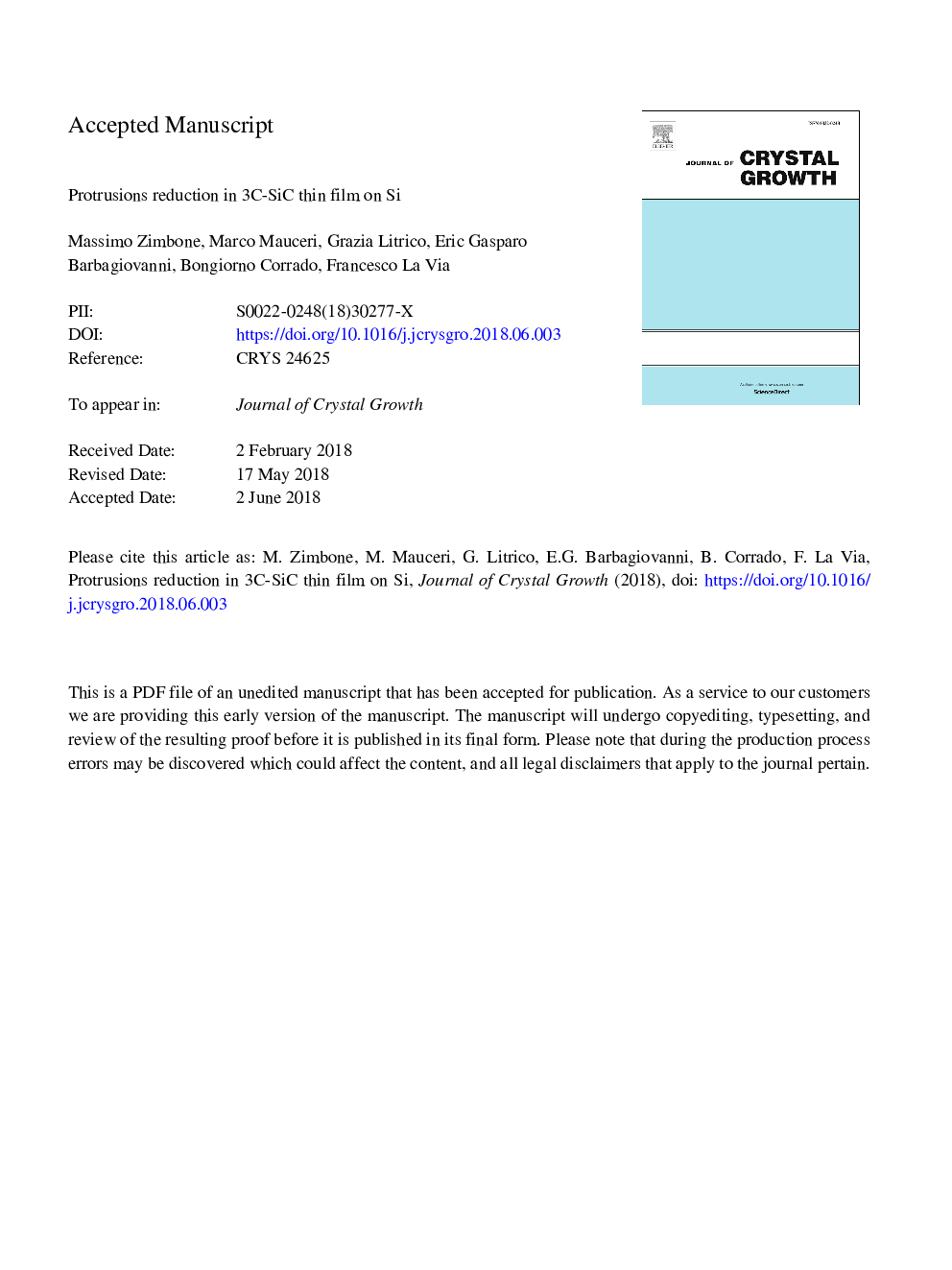| Article ID | Journal | Published Year | Pages | File Type |
|---|---|---|---|---|
| 8148448 | Journal of Crystal Growth | 2018 | 28 Pages |
Abstract
We present a study for large defects called protrusions that form during the hetero-epitaxy of SiC on Si. We focus first on surface morphology, size, three-dimensional shape and internal structure, and second on photoluminescence and Raman features. These defects have a peculiar 3D structure similar to inverted square pyramids with a vertex close to the SiC/Si interface. The size of the square and the height of the pyramid are both related to the thickness of the epi-layer and are spatially limited by the stacking faults in the {1â¯1â¯1} planes. The inner core of the defect consists of nano crystals twinned with respect to the substrate orientation. The defects demonstrate broad peculiar emission band at about 750â¯nm, while the usual photoluminescence signal from band recombination is at 520â¯nm. The SiC/Si interface is studied in order to investigate the seed of protrusion defect formation. We found that seeds responsible for the formation of protrusions lie 10â¯nm above the SiC/Si interface. This indicates that protrusion forms after the carbonization process, in particular in the temperature ramp up after carbonization. Modifying the Si/C ratio and some other growth parameters in the post-carbonization process we succeed in reducing the density of protrusion to less than 10â¯cmâ2.
Keywords
Related Topics
Physical Sciences and Engineering
Physics and Astronomy
Condensed Matter Physics
Authors
Massimo Zimbone, Marco Mauceri, Grazia Litrico, Eric Gasparo Barbagiovanni, Corrado Bongiorno, Francesco La Via,
